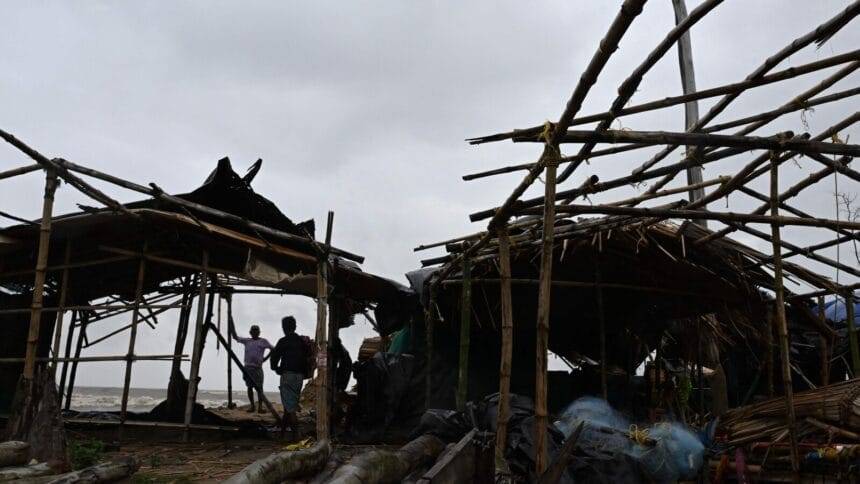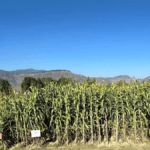Main Points In Hindi (मुख्य बातें – हिंदी में)
यहां दिए गए लेख के मुख्य बिंदु निम्नलिखित हैं:
-
जलवायु संकट और आपदाओं की बढ़ती संख्या: पिछले चार दशकों में जलवायु संकट के कारण आपदाओं की संख्या में पांच गुना वृद्धि हुई है, जिससे जीवन, संपत्ति, अर्थव्यवस्था और जैव विविधता को गंभीर नुकसान पहुंचा है।
-
प्रारंभिक मौसम चेतावनी प्रणालियों का महत्व: प्रारंभिक चेतावनी प्रणाली (EWS) को आपदा रोकथाम का एक महत्वपूर्ण साधन माना जाता है, जो चेतावनी देकर जीवन बचाने और आर्थिक नुकसान को कम करने में मदद करता है। यदि चेतावनी 24 घंटे पहले दी जाती है, तो यह नुकसान को 30% तक कम कर सकती है।
-
डब्ल्यूएमओ का लक्ष्य: विश्व मौसम संगठन (WMO) का उद्देश्य सभी देशों और वैश्विक आबादी के लिए उचित प्रारंभिक चेतावनी प्रणालियों का विकास करना है, क्योंकि वर्तमान में एक तिहाई वैश्विक जनसंख्या अभी भी इन प्रणालियों के दायरे में नहीं है।
-
आवश्यकता और समर्थन: विशेष रूप से कम विकसित देशों (LDCs) और छोटे द्वीप विकासशील देशों (SIDS) को प्रारंभिक चेतावनी प्रणालियों के लिए अंतरराष्ट्रीय स्तर पर समर्थन और निवेश की आवश्यकता है। इसके लिए विभिन्न वैश्विक फंडिंग तंत्रों का उपयोग किया जा रहा है।
- नवीनतम कार्य योजना: UN SG के नेतृत्व में एक कार्य योजना तैयार की गई है, जिसमें चार प्रमुख स्तंभ शामिल हैं: आपदा जोखिम ज्ञान, निगरानी और पूर्वानुमान, चेतावनी का संचार, और तैयारी एवं प्रतिक्रिया क्षमताएं। यह योजना विभिन्न स्तरों पर एक उचित रूपरेखा प्रदान करती है, जिससे सभी हितधारकों को शामिल किया जा सके।
Main Points In English(मुख्य बातें – अंग्रेज़ी में)
Here are the main points from the provided text on increasing the coverage of early weather warning systems in response to climate change:


-
Rising Climate Crisis Impacts: The frequency of climate-related disasters has significantly increased, with the World Meteorological Organization (WMO) reporting a fivefold rise in such events from 1970 to 2019. These disasters have detrimental effects on life, property, economies, and biodiversity, emphasizing the urgent need for effective response strategies.
-
Importance of Early Warning Systems: Early warning systems (EWS) have emerged as a crucial public policy strategy for disaster risk reduction. According to UN Secretary-General António Guterres, these systems save lives and provide financial benefits, potentially reducing damage by up to 30% if warnings are issued 24 hours in advance.
-
Global Coverage Gaps: Approximately one-third of the global population remains unprotected by early warning systems, particularly in least developed countries (LDCs) and small island developing states (SIDS). The WMO data indicates that only 50% of nations have these systems in place, requiring increased efforts to achieve comprehensive coverage.
-
Investment and Implementation Strategy: The WMO has outlined a five-year plan requiring an investment of up to $3.1 billion to develop multi-hazard early warning systems. This plan includes four pillars: disaster risk knowledge, detection and monitoring, communication of warnings, and preparation and response capabilities.
- Need for Multilateral Support: Vulnerable countries, particularly LDCs and SIDS, require multilateral support to access effective early warning systems. Initiatives like the Climate Risk and Early Warning Systems (CREWS) aim to provide vital financial and technical assistance to enhance resilience against climate-related hazards. The collaborative efforts span various stakeholders, ensuring that local knowledge and community-based approaches are integrated into the planning and response to disasters.
Complete News In Hindi(पूरी खबर – हिंदी में)
दशकों से, बढ़ते जलवायु संकट-संबंधी आपदाओं के प्रभावों ने जीवन, संपत्ति, अर्थव्यवस्था और जैव विविधता की हानि और क्षति को बढ़ा दिया है। विश्व मौसम विज्ञान संगठन (डब्ल्यूएमओ) के अनुसार, 1970-2019 के दौरान आपदाओं की संख्या पांच गुना बढ़ गई है। एंथ्रोपोसीन मानव गतिविधियों के भूवैज्ञानिक युग का प्रस्ताव करता है, जिसके कारण ग्रह को विनाशकारी परिवर्तनों का सामना करना पड़ता है जो मानव समाज और पृथ्वी के जीवित और निर्जीव पारिस्थितिक तंत्र को नुकसान पहुंचाते हैं।
सितंबर 2024 में, विनाशकारी बाढ़ ने यूरोप, एशिया, अफ्रीका और उत्तरी अमेरिका के चार महाद्वीपों को प्रभावित किया। पोलैंड, ऑस्ट्रिया और चेक गणराज्य जैसे यूरोपीय देशों में तूफान बोरिस के कारण बाढ़ के कारण रिकॉर्ड तोड़ बारिश हुई। एशिया में, चीन टाइफून बेबिन्का से प्रभावित हुआ था, और वियतनाम में, सुपर टाइफून यागी ने गंभीर क्षति पहुंचाई, आपूर्ति श्रृंखला बाधित हुई और संपत्ति को नुकसान हुआ। अफ्रीका में, नाइजर, चाड और कैमरून में भारी मानसूनी बारिश ने समुदायों को विस्थापित करके और फसलों और पशुओं को नुकसान पहुंचाकर लाखों लोगों को प्रभावित किया। दक्षिणपूर्वी संयुक्त राज्य अमेरिका (यूएस) तट पर मूसलाधार बारिश हुई, जिससे स्थानीय बाढ़ आ गई। ये बाढ़ें जलवायु संकट के गंभीर परिणामों और भविष्य में आबादी को इस तरह के नुकसान से बचाने और तैयार करने की आवश्यकता का उदाहरण देती हैं।
प्रारंभिक मौसम चेतावनी प्रणाली विकसित करना सार्वजनिक नीति की मुख्य आपदा रोकथाम रणनीति बन गई है। संयुक्त राष्ट्र (यूएन) महासचिव (एसजी) एंटोनियो गुटेरेस का दावा है कि प्रारंभिक चेतावनी प्रणाली काम करती है, जीवन बचाती है और वित्तीय लाभ पहुंचाती है। WMO के अनुसार, यदि 24 घंटे के भीतर पूर्व चेतावनी जारी की जाती है, तो एक प्रारंभिक चेतावनी प्रणाली क्षति को 30% तक कम कर सकती है। प्रारंभिक चेतावनी प्रणालियों के माध्यम से वैश्विक स्तर पर सालाना 3-16 अरब डॉलर के नुकसान से बचा जा सकता है। संयुक्त राष्ट्र एसजी सभी सरकारों, वित्तीय संस्थानों और नागरिक समाज से सभी के लिए संयुक्त राष्ट्र की प्रारंभिक चेतावनी: कार्यकारी कार्य योजना 2023-2027 का समर्थन करने का आग्रह करता है।
संयुक्त राष्ट्र आपदा जोखिम न्यूनीकरण कार्यालय (यूएनडीआरआर) के अनुसार, मौसम चेतावनी प्रणालियाँ आपदा जोखिमों की निगरानी, भविष्यवाणी, आकलन, संवाद करने और समय पर कार्रवाई के लिए व्यक्तियों, समुदायों, सरकारों, व्यवसायों और अन्य लोगों को तैयार करने के लिए तकनीकी उपकरणों की एक एकीकृत प्रणाली है। खतरनाक घटनाओं से पहले ही आपदा जोखिमों को कम करें। वे अलर्ट और चेतावनियाँ प्रसारित करके आबादी और समुदायों को तैयार करने के लिए मौसम संबंधी पूर्वानुमान, संचार प्रौद्योगिकी और सार्वजनिक जागरूकता को सहजता से एकीकृत करते हैं।
डब्लूएमओ के आंकड़े बताते हैं कि वैश्विक आबादी का एक तिहाई, लगभग 30%, अभी भी प्रारंभिक चेतावनी प्रणालियों द्वारा कवर किया जाना बाकी है। इस प्रकार, संयुक्त राष्ट्र एसजी एक समावेशी प्रारंभिक चेतावनी प्रणाली का आह्वान करता है जो सभी को कवर करे। उन्होंने कहा, “आज, दुनिया के एक-तिहाई लोग, मुख्य रूप से कम विकसित देशों और छोटे द्वीप विकासशील राज्यों में, अभी भी प्रारंभिक चेतावनी प्रणालियों के दायरे में नहीं हैं… यह अस्वीकार्य है, विशेष रूप से जलवायु प्रभावों के और भी बदतर होने के साथ।” प्रारंभिक चेतावनी प्रणालियों की वैश्विक स्थिति: लक्ष्य जी रिपोर्ट रेखांकित करती है कि केवल 50% देशों में प्रारंभिक चेतावनी प्रणालियाँ हैं। सबसे कम विकसित देशों (एलडीसी), छोटे द्वीप विकासशील राज्यों (एसआईडीएस) और अफ्रीका में उनका कवरेज कम है।
इसके अलावा, उन देशों के लिए भी कवरेज कम है जहां प्रारंभिक चेतावनी प्रणाली है। WMO को चार मल्टी-हैज़र्ड अर्ली वार्निंग सिस्टम (MHEWS) स्तंभों को लागू करने के लिए पाँच वर्षों में 3.1 बिलियन डॉलर तक का निवेश इकट्ठा करने के लिए कार्यकारी कार्य योजना का नेतृत्व करने का काम सौंपा गया था। WMO UNDRR और अन्य संयुक्त राष्ट्र एजेंसियों के साथ समन्वय करेगा। कार्य योजना में प्रारंभिक चेतावनी प्रणाली के चार आवश्यक स्तंभ शामिल हैं- (ए) आपदा जोखिम ज्ञान, (बी) पता लगाना, अवलोकन, निगरानी और पूर्वानुमान, (सी) चेतावनी प्रसार और संचार, और (डी) तैयारी और प्रतिक्रिया क्षमताएं।
यह योजना अंतरराष्ट्रीय प्रयासों को अनुकूलित करके खतरों का पता लगाने, अवलोकन अंतर को बंद करने और वैश्विक पूर्वानुमान डेटा प्रसंस्करण प्रणालियों को आगे बढ़ाने के लिए तकनीकी क्षमता बढ़ाने का प्रयास करती है। वित्तपोषण तंत्र के संदर्भ में, यह जलवायु जोखिम और प्रारंभिक चेतावनी प्रणाली (CREWS) पहल और ग्रीन क्लाइमेट फंड को मजबूत करने और व्यवस्थित अवलोकन वित्तपोषण सुविधा (SOFF) के संचालन पर जोर देता है।
एलडीसी और एसआईडीएस जैसे सबसे कमजोर देशों को जीवन और अन्य क्षति को कम करने के लिए बहुपक्षीय समर्थन की आवश्यकता होती है। इन देशों को प्रारंभिक चेतावनी प्रणालियों के लिए क्रू पहल से समर्थन प्राप्त होता है जो लोगों को पर्याप्त, जोखिम-सूचित, लिंग-उत्तरदायी और जन-केंद्रित प्रारंभिक चेतावनी प्रणालियों तक पहुंच प्रदान करता है। क्रू ने एलडीसी और एसआईडीएस देशों में 100 मिलियन डॉलर से अधिक का निवेश किया है। क्रू इस संबंध में देश और क्षेत्रीय परियोजनाओं के माध्यम से कार्यान्वयन भागीदारों, डब्लूएमओ, विश्व बैंक और यूएनडीआरआर सहित अन्य हितधारकों के माध्यम से अपनी प्रारंभिक चेतावनी आवश्यकताओं का जवाब देते हैं। फिर, एसओएफएफ देशों को प्राथमिक सतह-आधारित अवलोकन डेटा प्रदान करता है, जो मौसम पूर्वानुमान और जलवायु सेवाओं में सुधार के लिए महत्वपूर्ण है। तकनीकी सहायता के अलावा, एसओएफएफ मौजूदा फंडिंग पहलों को पूरा करने के लिए दीर्घकालिक वित्तीय सहायता प्रदान करता है। अंतर्राष्ट्रीय डेटा के सतत आदान-प्रदान, वित्तपोषण तंत्र, मौजूदा तकनीकी क्षमता को बढ़ाने और ज्ञान और संसाधनों का लाभ उठाने के वैश्विक दृष्टिकोण के कारण एसओएफएफ प्रारंभिक चेतावनी प्रणालियों के लिए आवश्यक है।
प्रारंभिक चेतावनी प्रणालियाँ कई जलवायु संकट निकायों या दस्तावेज़ों जैसे जलवायु परिवर्तन पर अंतर सरकारी पैनल, आपदा जोखिम न्यूनीकरण के लिए सेंडाई फ्रेमवर्क और पेरिस समझौते के लिए महत्वपूर्ण रही हैं। इन प्रणालियों को एसडीजी लक्ष्यों को प्राप्त करने के लिए सतत विकास के 2030 एजेंडा को प्राप्त करने के लिए टिकाऊ उपायों में से एक के रूप में भी शामिल किया गया है।
कार्यकारी योजना इस दिशा में सरकारों, व्यवसायों, आबादी और नागरिक समाज को तैयार करने के लिए एक महत्वपूर्ण इनपुट है। इनपुट विभिन्न स्तरों पर विस्तृत हैं – नीति, वित्तपोषण और सभी चार स्तंभों में तकनीकी। यह कार्यान्वयन के लिए एक रूपरेखा के रूप में कार्य करता है जो सभी हितधारकों को कवर करते हुए प्रारंभिक निवारक कार्रवाइयों को ठोस बनाता है। इसने स्थानीय नेटवर्क और अभिनेताओं के साथ सहयोग करने के लिए एक समावेशी और जन-केंद्रित दृष्टिकोण तैयार किया है। यह स्वदेशी ज्ञान प्रणालियों और समुदाय-आधारित बाढ़ और सूखा प्रबंधन जैसे समुदाय-आधारित बुनियादी ढांचे का लाभ उठाता है।
प्रारंभिक चेतावनियों का स्तंभ-‘प्रतिक्रिया देने की तैयारी’ को जीवन-बचत कार्यों में देखा जाना चाहिए। सबसे पहले नीतिगत, तकनीकी और वित्तीय स्तर पर तैयारी की जाती है। फिर, राष्ट्रीय और स्थानीय अधिकारियों, व्यवसायों, समुदायों, गैर सरकारी संगठनों और इंटरनेशनल फेडरेशन ऑफ रेड क्रॉस रेड क्रिसेंट सोसाइटीज जैसे जमीनी स्तर के कार्यकर्ताओं को शामिल करके तैयारियों को कार्रवाई में तब्दील किया जाता है। रोकथाम के इस चरण के साथ-साथ ज़मीनी स्तर पर की गई तैयारियों और कार्रवाइयों की निगरानी और मूल्यांकन भी किया जाना है। मोबाइल उपकरणों और इंटरनेट का लाभ उठाकर प्रारंभिक चेतावनियों और कार्रवाई दिशानिर्देशों को राष्ट्रीय/क्षेत्रीय/स्थानीय अधिकारियों और आम जनता तक प्रसारित किया जा सकता है।
इस प्रकार, प्रारंभिक चेतावनी प्रणालियों की प्रभावशीलता को मजबूत करने के बाद निरंतर निवारक कार्रवाइयों और एजेंसियों (राष्ट्रीय और अंतर्राष्ट्रीय) के बीच सहयोग से जान बचाई जा सकती है, नुकसान कम किया जा सकता है और समुदायों को जलवायु संकट से संबंधित आपदाओं के प्रति अधिक लचीला बनाया जा सकता है।
यह लेख मेहदी हुसैन, अनुसंधान सहयोगी, भारतीय विश्व मामलों की परिषद और राजनीति विज्ञान के पूर्व सहायक प्रोफेसर, किरोड़ीमल कॉलेज, दिल्ली विश्वविद्यालय द्वारा लिखा गया है।
Complete News In English(पूरी खबर – अंग्रेज़ी में)
For decades, the effects of increasing climate crisis-related disasters have led to significant losses in life, property, economy, and biodiversity. According to the World Meteorological Organization (WMO), the number of disasters increased fivefold between 1970 and 2019. The term “Anthropocene” describes an era influenced by human activities, which have caused the planet to face destructive changes that harm both human society and Earth’s living and non-living ecosystems.
In September 2024, devastating floods impacted four continents: Europe, Asia, Africa, and North America. Record rainfall in European countries like Poland, Austria, and the Czech Republic was caused by Storm Boris. In Asia, China was affected by Typhoon Bebincka, and in Vietnam, Super Typhoon Yagi caused severe damage, disrupting supply chains and damaging property. In Africa, heavy monsoon rains in Niger, Chad, and Cameroon displaced communities and harmed crops and livestock. The southeastern U.S. also experienced heavy rains leading to local flooding. These floods illustrate the serious consequences of the climate crisis and the need for populations to be better prepared to avoid such damages in the future.
Developing early weather warning systems has become a crucial public policy strategy for disaster prevention. United Nations (UN) Secretary-General Antonio Guterres claims that early warning systems save lives and provide financial benefits. According to the WMO, if warnings are issued 24 hours in advance, early warning systems can reduce damage by up to 30%. Globally, these systems can potentially prevent annual losses of between $3 to 16 billion. The UN Secretary-General urges all governments, financial institutions, and civil society to support the UN’s Early Warnings for All initiative: Executive Action Plan 2023-2027.
The UN Office for Disaster Risk Reduction (UNDRR) states that weather warning systems are integrated technical tools that help individuals, communities, governments, businesses, and others monitor, predict, assess, communicate disaster risks, and take timely action to reduce these risks before dangerous events occur. They seamlessly integrate weather forecasting, communication technology, and public awareness to prepare populations and communities through alerts and warnings.
According to WMO data, about one-third of the global population, approximately 30%, is still not covered by early warning systems. The Secretary-General of the UN has called for an inclusive early warning system that covers everyone. He stated, “Today, one-third of people around the world, mainly in less developed countries and small island developing states, are still out of reach of early warning systems… This is unacceptable, especially as the impacts of climate change worsen.” The Global Status Report on Early Warning Systems: Goal G highlights that only 50% of countries have early warning systems, with the coverage being lower in Least Developed Countries (LDCs), Small Island Developing States (SIDS), and Africa.
Additionally, even in countries where early warning systems exist, coverage is still insufficient. The WMO has been tasked with leading an executive action plan to raise up to $3.1 billion over five years for implementing four pillars of Multi-Hazard Early Warning Systems (MHEWS). WMO will coordinate with UNDRR and other UN agencies. The action plan includes four essential pillars of early warning systems: (A) disaster risk knowledge, (B) detection, observation, monitoring, and forecasting, (C) warning dissemination and communication, and (D) preparedness and response capabilities.
This plan aims to enhance technical capacity to detect threats, close observation gaps, and improve global forecasting and data processing systems by optimizing international efforts. In terms of funding mechanisms, it emphasizes strengthening the Climate Risk and Early Warning Systems (CREWS) initiative and the operation of the Sustainable Observation Financing Facility (SOFF).
The most vulnerable nations, like LDCs and SIDS, need multilateral support to reduce loss of life and other damages. These countries receive backing for early warning systems through the CREWS initiative, ensuring that communities have access to adequate, risk-informed, gender-responsive, and people-centered early warning systems. The CREWS initiative has invested over $100 million in LDCs and SIDS. In this context, the initiative responds to the early warning needs of countries through implementation partners and various stakeholders, including the WMO, World Bank, and UNDRR. Meanwhile, SOFF supplies essential surface-based observation data to these nations, vital for improving weather forecasting and climate services. In addition to technical support, SOFF provides long-term financial assistance to complement existing funding initiatives. The global approach emphasizes sustainable data exchange, funding mechanisms, and leveraging existing technical capacity and resources for effective early warning systems.
Early warning systems have been significant in various climate change documents and bodies, including the Intergovernmental Panel on Climate Change, the Sendai Framework for Disaster Risk Reduction, and the Paris Agreement. These systems are also recognized as sustainable measures to achieve the Sustainable Development Goals (SDGs) and the 2030 Agenda for Sustainable Development.
The executive plan is a critical input for preparing governments, businesses, populations, and civil society in this direction. This input is comprehensive, covering aspects from policy and financing to all four pillars of technology. It serves as a roadmap for implementation that consolidates early preventive actions while covering all stakeholders. The plan promotes an inclusive and people-centered approach, collaborating with local networks and actors, leveraging indigenous knowledge systems, and implementing community-based infrastructure for flood and drought management.
The pillar of early warnings—’preparedness for response’—should be seen as a life-saving action. It is first prepared at the policy, technical, and financial levels. Then, with the involvement of national and local authorities, businesses, communities, non-governmental organizations, and grassroots workers like those from the International Federation of Red Cross and Red Crescent Societies, preparations transform into action. This prevention phase, along with monitoring and evaluating the preparations and actions taken at the grassroots level, is essential. Mobile devices and the internet can be used to disseminate early warnings and action guidelines to national, regional, and local authorities as well as the general public.
Thus, strengthening the effectiveness of early warning systems through continuous preventive actions and collaboration between agencies (both national and international) can save lives, reduce losses, and build more resilient communities in the face of climate crisis-related disasters.
This article was written by Mehdi Hussain, a research associate at the Indian Council of World Affairs and a former assistant professor of political science at Kirori Mal College, University of Delhi.






